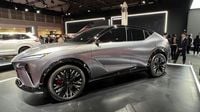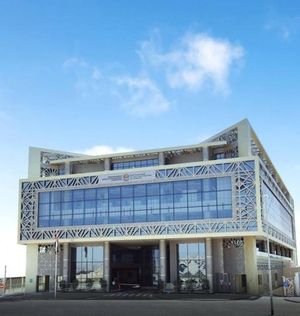The Tokyo Mobility Show, always a spectacle of technological ambition, opened its doors to the public this week against a backdrop of high-stakes economic maneuvering and political tension between Japan and the United States. While robots and futuristic vehicles dazzled visitors, the real drama played out behind the scenes, where Japanese automakers and government officials scrambled to address a growing trade imbalance and the threat of newly raised U.S. tariffs.
For decades, the U.S.-Japan auto trade relationship has been fraught with friction. Now, with U.S. President Donald Trump raising tariffs on Japanese cars to 15%—a sharp jump from the previous 2.5%—the stakes have never been higher. According to the Associated Press, this increase is expected to wipe more than 2 trillion yen (about $13 billion) from automakers’ annual operating profits. The move, though an improvement from the initial 25% tariff, has nonetheless sent shockwaves through Japan’s automotive industry.
In an effort to ease tensions and show goodwill, top Japanese automakers are contemplating an unusual strategy: importing some of their own U.S.-built vehicles back to Japan. It’s a costly and, by most accounts, impractical gesture, but one designed to demonstrate cooperation with Washington’s demands to reduce the trade deficit. As Takaki Nakanishi, a seasoned auto analyst, told Reuters, “Rather than doing it for business reasons, it’s more about showing that the auto industry is also cooperating to reduce trade friction and the trade deficit.”
Toyota, the world’s largest automaker, is at the forefront of this initiative. CEO Koji Sato, speaking at the Japan Mobility Show, confirmed that the company is “studying the possibility” of so-called "reverse imports." Sato emphasized that this was less about profit and more about contributing to "open and fair trade." Nissan, too, is weighing the move. Chief Performance Officer Guillaume Cartier told Reuters the company is “looking seriously” at importing U.S.-built models, despite the obvious hurdles: higher labor costs in the U.S., a weak yen inflating prices, and the technical headaches of aligning vehicles with Japan’s distinct safety standards.
Honda has also joined the conversation. At the show, CEO Toshihiro Mibe said Honda would consider importing the U.S.-made Acura RSX to Japan if there was enough domestic demand for it, as reported by Automotive News. The discussion, Mibe noted, is very much a response to the ongoing trade issues under the Trump administration. These moves, while significant symbolically, are unlikely to make a major dent in the $68.5 billion U.S. trade deficit with Japan. Industry experts estimate reverse imports might amount to just 20,000 cars a year—a drop in the bucket compared to the nearly 1.4 million vehicles Japan exported to the U.S. last year, according to the Japan Automobile Manufacturers Association.
The Japanese government, for its part, is also getting creative. Prime Minister Sanae Takaichi’s administration has reportedly been hashing out plans to buy some Ford F-150 pickups—iconic in the U.S. but almost comically oversized for Japan’s narrow roads. These trucks might end up as snowplows or in other niche roles, but the message is clear: Japan is willing to go to great lengths to appease Washington. The government has also pledged to invest $550 billion in the U.S., a move designed to underscore Japan’s commitment to the American economy, according to the Associated Press.
Yet, the challenges are daunting. As Sato pointed out, differing safety standards between the two countries mean that U.S.-built cars often require significant modifications before they can be sold in Japan. And while Japanese automakers have spent decades and billions of dollars building up local operations in the U.S.—producing 3.3 million vehicles there in 2024 alone—the perception of an uneven playing field persists. Japanese cars make up about 40% of the American auto market, much of it from vehicles built in U.S. plants, while only about 16,000 American cars were sold in Japan last year—a tiny fraction of the Japanese market, as noted by Cox Automotive.
Meanwhile, the Tokyo Mobility Show itself showcased the innovative spirit of Japan’s auto sector. Honda’s Uni-One, a boxlike robotic chair envisioned as a personal mobility device for 2035, zipped quietly around the exhibition floor, capturing imaginations. Toyota unveiled a helicopter-like aircraft with six propellers, developed in partnership with U.S. aviation company Joby, signaling the company’s ambitions beyond traditional cars. Nissan presented a prototype Sakura electric car with a retractable solar roof—dubbed the "Ao-Solar Extender"—designed to generate electricity for household use or as an emergency power station. The concept, according to Nissan, targets environmentally conscious mothers and reflects a growing focus on sustainability.
“We believe the joy of driving has the power to shape the future,” Mazda CEO Masahiro Moro told reporters, highlighting efforts to create vehicles that sense drivers’ emotions and reduce carbon emissions the more they are driven. The show, running through November 9 at Tokyo Big Sight, is a testament to Japan’s determination to remain at the cutting edge of mobility, even as it grapples with political and economic headwinds.
President Trump’s visit to Tokyo earlier this week underscored the high-level nature of the negotiations. He met with Japan’s new Prime Minister, Sanae Takaichi, and leading business figures, including Nissan’s Chief Ivan Espinosa. Espinosa described the discussions as "constructive," noting, “Japan is at the center of what we do because we are a Japanese company.” The sentiment was echoed by Toyota’s Sato, who told reporters, “We want to be an important part of the American auto industry with a long-term perspective.”
Despite the diplomatic gestures and public commitments, the reality is that Japanese automakers face a tough road ahead. As Darcey Bowling, an auto analyst at BMI, explained to the Associated Press, "Automakers will look to increase U.S. production where possible and diversify export destinations to other key markets, such as Australia and Canada. We expect that Japan’s vehicle market will face challenges due to the elevated U.S. tariffs." Japanese exports to the U.S. have surged in recent months as companies rushed to beat the tariff deadline, but the real crunch is expected to hit next year.
In the end, the flurry of announcements, prototype unveilings, and political handshakes at the Tokyo Mobility Show reflect both the ingenuity and the anxiety of Japan’s auto industry. As the world watches, Japanese automakers are betting that a mix of innovation, diplomacy, and a few symbolic gestures—like importing their own U.S.-made cars—might just keep them in the driver’s seat as global trade rules shift beneath their wheels.






